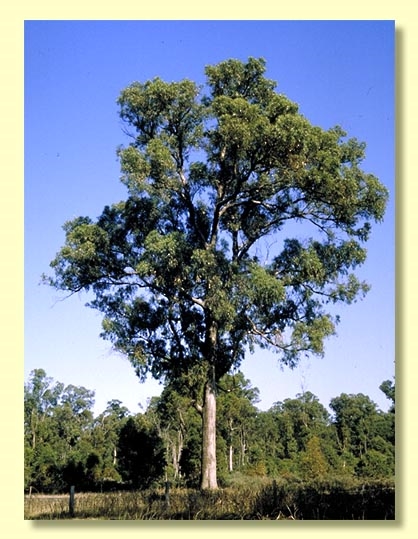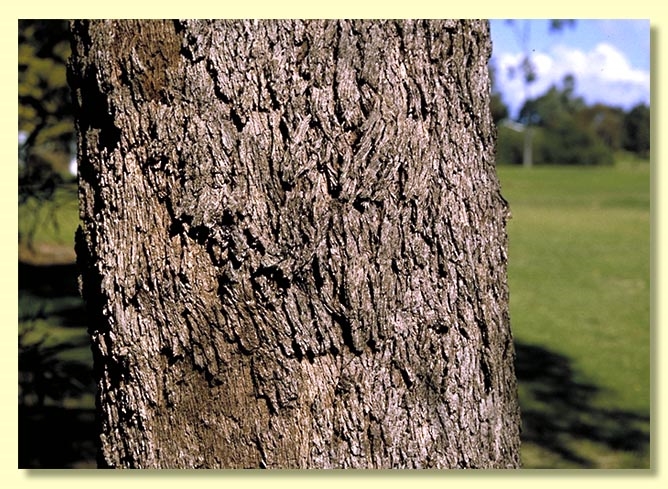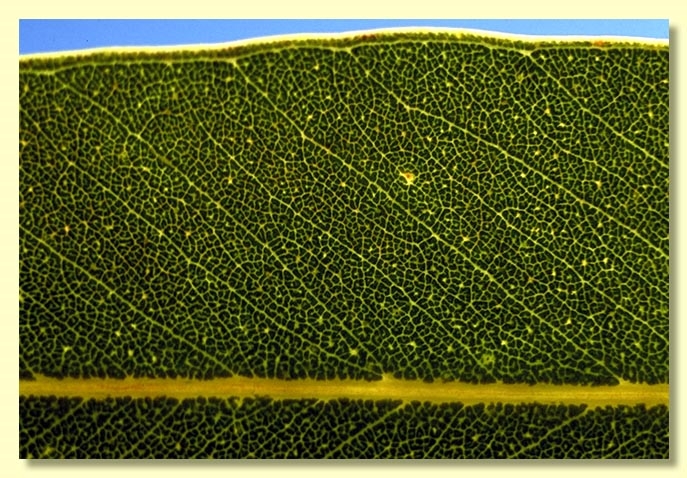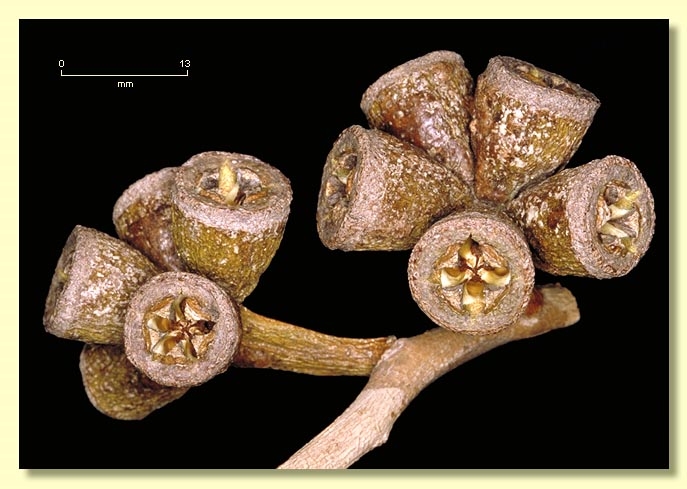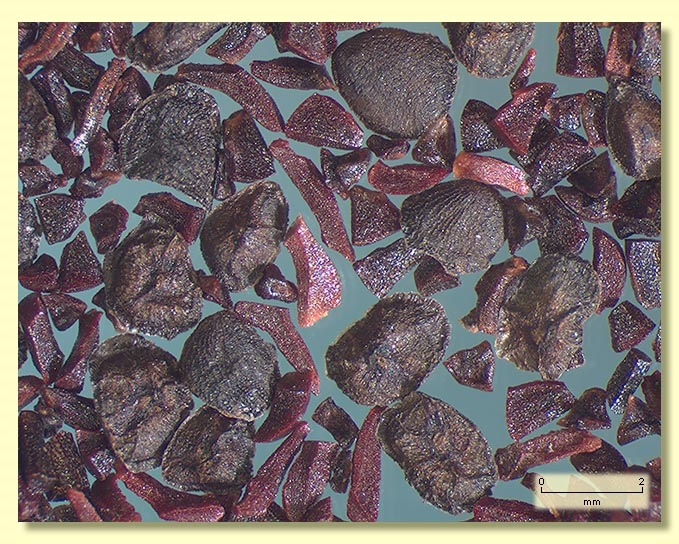Euclid - Online edition
Eucalyptus gomphocephala
Eucalyptus | Symphyomyrtus | Bolites
T: Geographe Bay, [W.A.], May 1801, J.Leschenault s.n.; holo: G; iso: K.
Eucalyptus gomphocephala var. rhodoxylon Blakely & Steedman, Contr. New South Wales Natl. Herb. 1: 36 (1939). T: Guildford district, W.A., Nov. 1937, H.Steedman s.n.; holo: NSW.
Bark rough throughout, finely fibrous, flaky and grey, becoming tessellated on large, old stems.
Branchlets usually with oil glands in the pith (occasionally very few and difficult to find).
Juvenile growth (coppice or field seedlings to 50 cm): stems rounded in cross-section; juvenile leaves always petiolate, opposite for ca 4 to 8 nodes then alternate, ovate or cordate, 9–15 cm long, 5.5–9.5 cm wide, base lobed to truncate, discolorous, green.
Adult leaves alternate, petioles 1–3 cm long; blade lanceolate, 10–18 cm long, 1.5–3 cm wide, base tapering to petiole, margin entire, apex pointed, concolorous, glossy, green, side-veins greater than 45° to midrib, reticulation dense, intramarginal vein close to margin, oil glands few, intersectional, or obscure.
Inflorescence axillary unbranched, peduncles flattened, widest apically, 1–3 cm long, buds 7 per umbel, usually shortly pedicellate or rarely sessile (pedicels 0–0.2 cm long). Mature buds like young mushrooms in outline (1.5–2.4 cm long, 0.9–1.2 cm wide), operculum hemispherical and wider than the obconical hypanthium at the join, scar present (outer operculum lost early), stamens irregularly flexed, anthers oblong, versatile, dorsifixed, dehiscing by longitudinal slits, style long and straight, stigma blunt, locules (3)4(5), the placentae each with 4 vertical rows of ovules (sometimes with a few extra laterally placed ovules). Flowers white.
Fruit pedicellate to rarely sessile (pedicels 0–0.8 cm long), campanulate to obconical, 1–1.9 cm long, 1.2–1.8 cm wide, sometimes with 2 partial longitudinal ridges extending from the pedicel, disc narrow, slightly raised to level or slightly descending, valves (3)4(5), rim level to partly exserted.
Seeds blackish to grey-brown, 2–3.5 mm long, flattened and saucer-shaped to flattened-ovoid, dorsal surface finely striate or wrinkled, a narrow circumferential flange sometimes present, hilum ventral.
Cultivated seedlings (measured at node 10): cotyledons bisected to bilobed (broadly Y-shaped); stems rounded in cross-section; leaves always petiolate, opposite for 4 to 8 nodes then alternate, deltoid to ovate or rarely cordate, 6–8 cm long, 4–6.5 cm wide, discolorous, dull, light green above, paler still below.
Flowering has been recorded in March.
A small to tall tree endemic to Western Australia, of coastal plains from Jurien Bay north of Perth to Ludlow in the south, on coastal sands that are not highly calcareous but may have limestone at depth. The bark is completely rough, the adult leaves glossy green and the buds coarsely mushroom-shaped.
Eucalyptus gomphocephala belongs in Eucalyptus subgenus Symphyomyrtus because the buds have two opercula and ovules are in four rows. However it is not closely related to any other species and occupies a solitary position in section Bolites as the cotyledons are coarsely bilobed, stamens are irregularly flexed, seeds are flattened-ovoid and there are usually a few pith glands in the branchlets.
Eucalyptus gomphocephala is often planted as a street tree, and also in shelterbelts and roadside plantings in south-western Victoria and on the Eyre Peninsula in South Australia. Geoff Carr et al. (1992) regard this species as an environmental weed posing a potential risk to lowland grassland and associated woodlands, noting that it is rarely or locally naturalised in small populations in the state.

